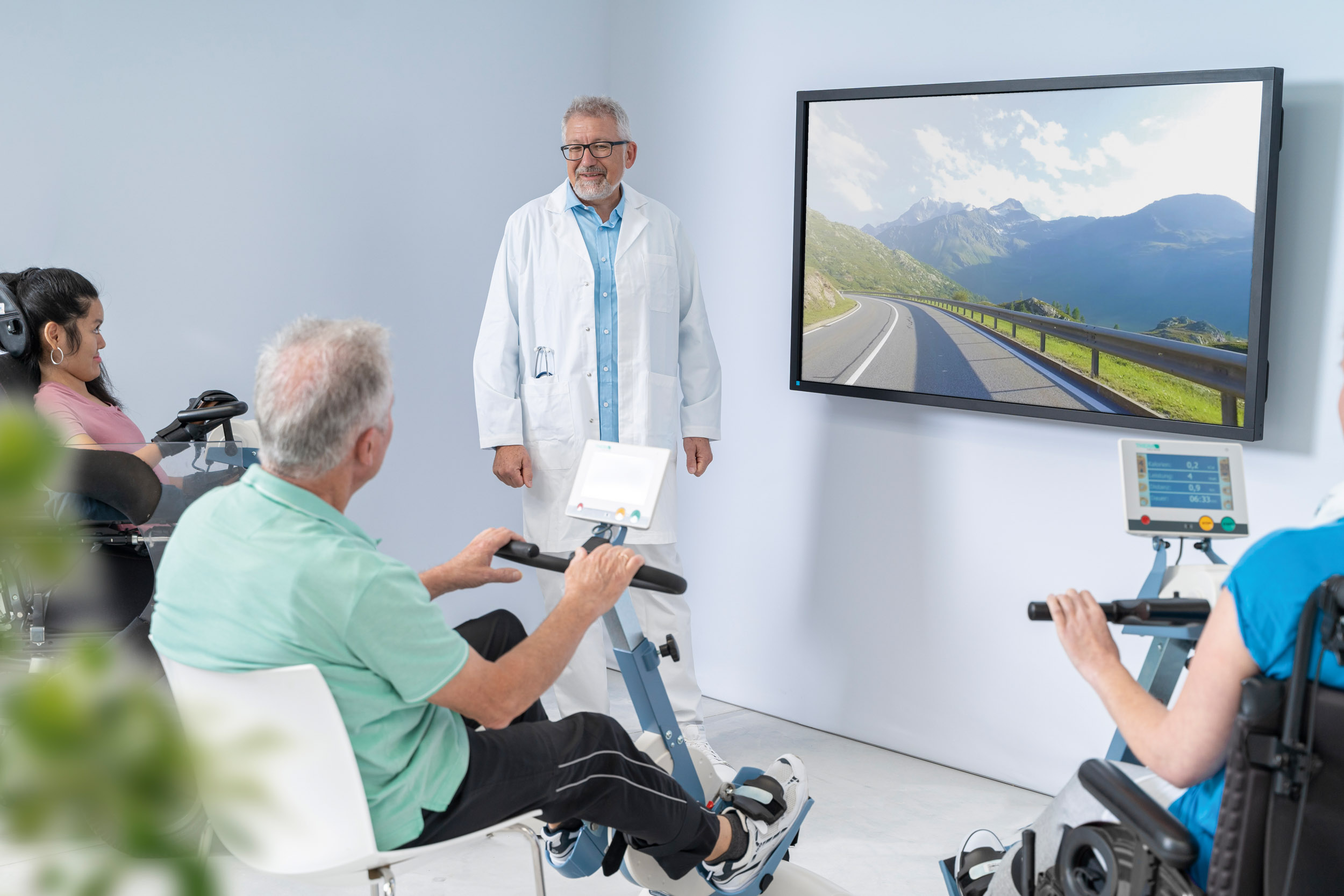
THERAPY-Magazin
Effectiveness of circuit training after having a stroke
Discover how circuit training improves walking speed, balance, and mobility in stroke patients. A meta-analysis confirms its effectiveness compared to conventional therapy.

Jakob Tiebel
Health Business Consultant
Various publications describe numerous interventions for the rehabilitation of mobility in patients with neurological dysfunctions. However, the effectiveness of circuit training – by definition an overall programme to improve strength, endurance, balance or functional capacity (cf. Bored and alone – Circuit training in neurorehabilitation, issue 01/2021) – has not yet been comprehensively studied with regard to walking speed, balance and functional mobility.
The aim of the systematic review by Bo-nini-Rocha et al. from the School of Physical Therapy at the University of Brazil was to evaluate the effectiveness of circuit training for treating people who have had a stroke.
The researchers searched the PubMed and Embase databases and the Cochrane Library for controlled clinical trials. The search was carried out without language or date restrictions. While extracting the data, mean differences between intervention and control groups were calculated for all outcomes, each with their 95% confidence intervals. Two independent experts assessed the risk of any possible bias.
Eleven studies met the inclusion criteria and eight presented suitable data to perform a meta-analysis. The quantitative analysis showed that circuit training is more effective than conventional intervention when the goal of the therapy was to improve walking speed (mean difference of 0.11 m/s), and that circuit training is at least as effective as conventional intervention when the goal of therapy was to improve balance and functional mobility.
The results demonstrate that circuit training has similar, and in some cases even more positive effects on crucial walking parameters than conventional comparative therapy. According to the recommendations of the Agency for Healthcare Research and Quality (AHCPR), the results of the meta-analysis correspond to evidence class I.
The researchers searched the PubMed and Embase databases and the Cochrane Library for controlled clinical trials. The search was carried out without language or date restrictions. While extracting the data, mean differences between intervention and control groups were calculated for all outcomes, each with their 95% confidence intervals. Two independent experts assessed the risk of any possible bias.
Eleven studies met the inclusion criteria and eight presented suitable data to perform a meta-analysis. The quantitative analysis showed that circuit training is more effective than conventional intervention when the goal of the therapy was to improve walking speed (mean difference of 0.11 m/s), and that circuit training is at least as effective as conventional intervention when the goal of therapy was to improve balance and functional mobility.
The results demonstrate that circuit training has similar, and in some cases even more positive effects on crucial walking parameters than conventional comparative therapy. According to the recommendations of the Agency for Healthcare Research and Quality (AHCPR), the results of the meta-analysis correspond to evidence class I.
Ambulante Rehabilitation
balo
Cycling
Fachkreise
Science
senso
Standing & Balancing
Stationäre Rehabilitation
THERAPY 2022-I
THERAPY Magazine
tigo

Jakob Tiebel
Health Business Consultant
Jakob Tiebel is OT and studied applied psychology with a focus on health economics. He has clinical expertise from his previous therapeutic work in neurorehabilitation. He conducts research and publishes on the theory-practice transfer in neurorehabilitation and is the owner of an agency for digital health marketing.
References:
- Bonini-Rocha AC, de Andrade ALS, Moraes AM, Gomide Matheus LB, Diniz LR, Martins WR (2018). Effectiveness of Circuit-Based Exercises on Gait Speed, Balance, and Functional Mobility in People Affected by Stroke: A Meta-Analysis. PM R. 2018 Apr;10(4):398-409. doi: 10.1016/j.pmrj.2017.09.014. Epub 2017 Oct 27. Review. PubMed PMID: 29111465.
Related contents
Find related exciting contents in our media library.
This is not what you are searching for? Knowledge
Meet our specialists.
Are you interested in our solutions? Schedule a meeting with a Consultant to talk through your strategy and understand how TEHRA-Trainer can help you to advance rehabilitation.